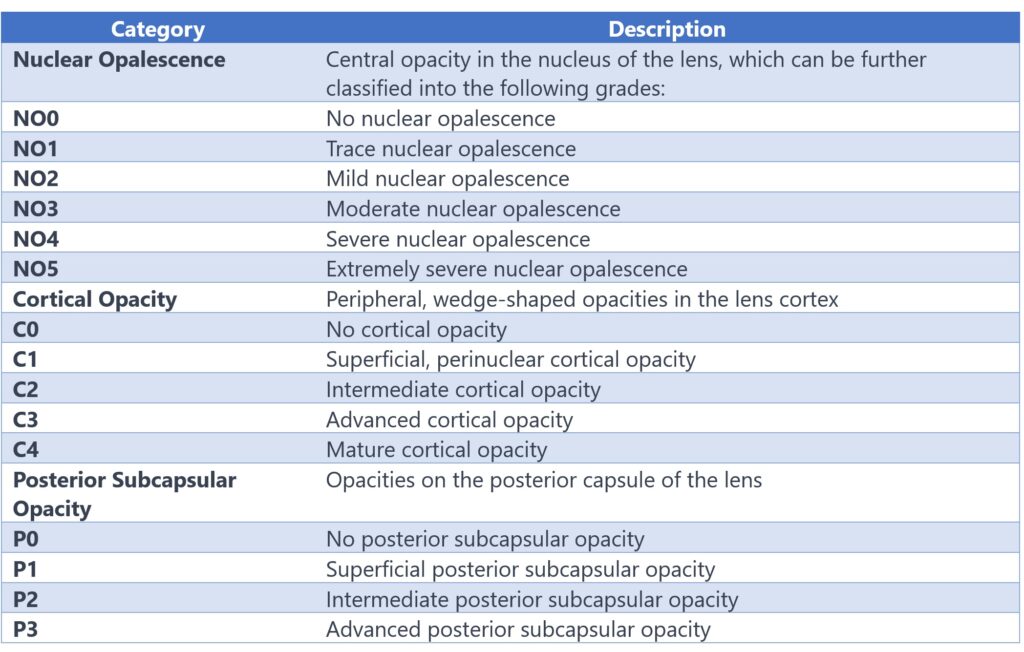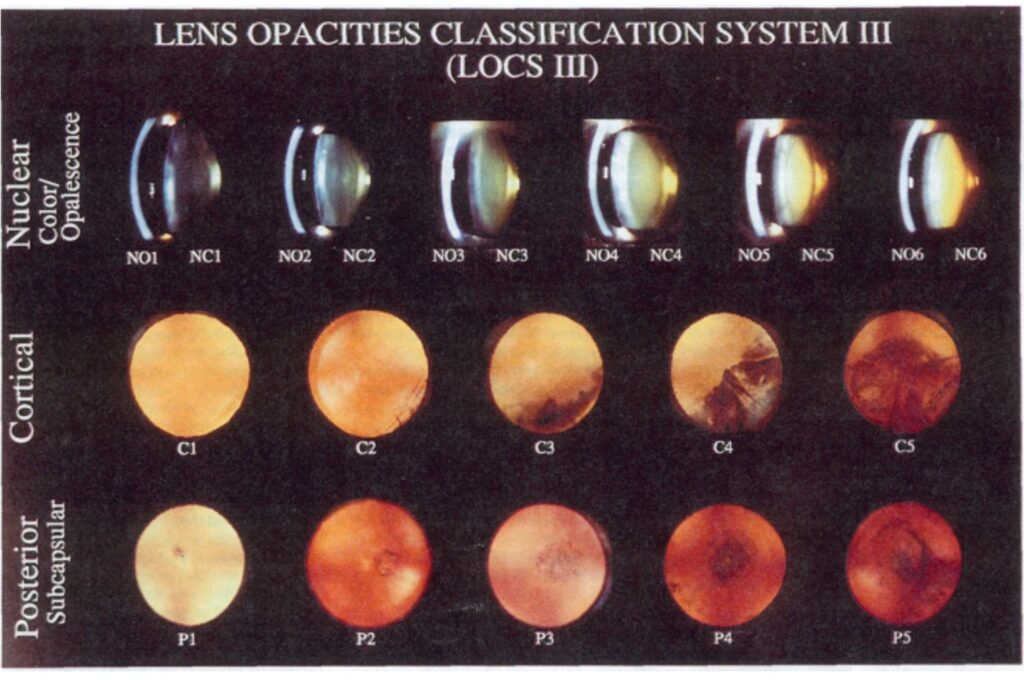Ophthalmology
Ophthalmology thesis material consist of common problems faced by residents writing ophthalmology thesis. The topics will update as residents ask me the difficulties they face while writing ophthalmology thesis. Initially i used to send them the study material related to their query on whatsapp but later i thought similar problems must be faced by others also so im uploading here so anyone searching for same problem can get benifited.

Ophthalmology thesis material
1. The Lens Opacities Classification system 3.
Lens opacification scales are standardized systems used in ophthalmology to classify and describe the degree and types of opacities in the eye’s crystalline lens, particularly in cases of cataracts. These scales help clinicians and researchers assess the severity and characteristics of lens opacities, which, in turn, aids in diagnosis and the planning of appropriate treatments, such as cataract surgery. Two widely recognized and utilized lens opacification classification scales are Lens Opacities Classification System II (LOCS II) and Lens Opacities Classification System III (LOCS III), each of which offers unique insights into cataract classification and has distinct features.
Lens Opacities Classification System II (LOCS II) and Lens Opacities Classification System III (LOCS III) are two prominent systems used to classify cataracts based on their opacities. LOCS II primarily focuses on three main categories: nuclear color, nuclear opalescence, and cortical cataracts, each of which is graded based on severity. LOCS III, an evolution of LOCS II, introduced additional classifications, including posterior subcapsular cataracts. LOCS II uses numeric grading from 0 to 6, with higher values indicating more severe opacities, while LOCS III employs alphanumeric codes for greater precision and a broader range of opacities. The key difference between LOCS II and LOCS III is the inclusion of posterior subcapsular cataracts in the latter, providing a more comprehensive assessment. Researchers and clinicians choose between these systems based on their specific needs and the level of detail required for cataract evaluation.


